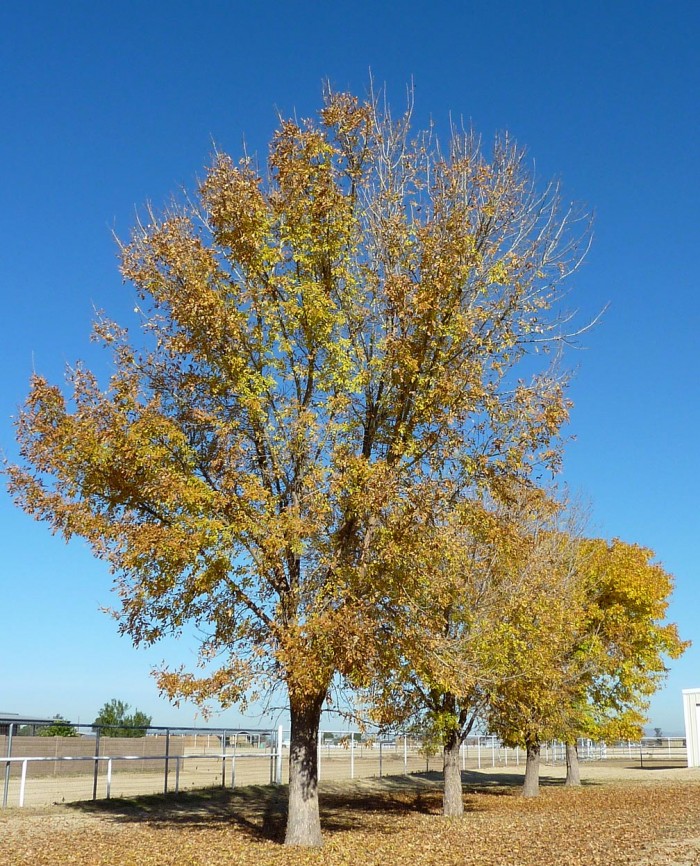
Ash trees are in the family genus Fraxinus and are common in many parts of the United States and Canada. The hearty nature of these trees, as well as their tolerance for different environments, makes them a common sight in many neighborhoods. It boasts many unique characteristics that make it easily distinguishable from other types of trees.
How to Identify an Ash Tree
Once people understand the characteristics of an ash tree, they can often identify one by simply glancing at it.
- Opposing branches: The branches of the ash tree grow in pairs on opposing side of the twigs. Some people refer to them as mate branches. There are only a handful of trees that display this characteristic, which is one reason the ash is so easy to identify. Remember, it’s quite common for the branches and buds to die off, so not every branch will have an opposing mate.
- Compound leaf: Unlike a simple leaf, where there is only one leaf to a bud, a compound leaf has 5 to 11 leaflets on a single bud.
- Diamond pattern: The bark on young ash trees is relatively smooth. As the trees mature, they start to develop a characteristic diamond pattern. When the trees reach maturity, the diamond pattern rises out of the bark and becomes extremely noticeable.
- Oar-Shaped seeds: Visible ash trees seeds are shaped like oars, and they stay perched on the tree until early winter.
Types of Ash Trees
Just like other types of greenery, there are many species of ash trees. Some of the most common include black, white, velvet and California. Bark color, height, leaf color and a number of other things make each type of ash tree slightly different.
Black Ash: This plant is native to the Northern United States and Canada. It can hold its own in cold climates and tends to thrive in moist environments that get plenty of rainfall. The bark is blackish in color, and the oval-shaped leaves are deep green in the summer and spring. The black ash tree usually tops out at between 40 and 60 feet tall.
California Ash: This tree is native to the southwestern part of Northern America. It is the smallest of all ash trees. It only reaches 20 to 25 feet in height. The bark is grayish-brown, and the rich green leaves have saw-like edges. In the spring, the California ash blooms sweet-smelling, fluffy white flowers that can add softness to landscapes.
Velvet Ash: People looking for a low-maintenance plant to use in landscaping projects can’t go wrong with the velvet ash. This tree is native to Southwestern North America and is often called the Arizona Ash. It grows well in dry conditions and tends to also thrive in wet and alkaline-type soil. The bark has a brownish hue, and the twigs are covered in a velvety-type down. In the fall, the long, slender leaves of the velvet ash turn orange and yellow. This tree reaches a height of about 30 feet.
White Ash: This Eastern North America native is also called the Baltimore ash. It gets its name from the whitish hue found underneath the leaves. This species is a popular landscaping ash because it is ideal for providing shade in the summer. This tree needs a large planting space as it can grow 50 to 80 feet high. The bark is light gray, and the leaves turn orange, red, purple and gold in the fall. The tree is extremely adaptable and does well in most soil conditions.
Other types of ash trees include:
- Blue
- Carolina
- European
- Green
- Gregg’s
- Manna
- Narrow Leaf
- Pumpkin
Common Ash Tree Problems
Although most ash trees are considered hale and hearty, funguses, pests and other organisms can rob them of their beauty and shorten their lifespan.
- Anthracnose: This fungus can infect the root, twigs, buds and other parts of the ash tree. It is more common in the green ash species and tends to thrive in the spring. Rain can increase the spread of anthracnose to different parts of the tree. When the ash gets infected with this sickness, it causes brown splotches on the foliage and leads to defoliation. Fungicide is often needed to control the spread of anthracnose.
- Ash Yellows: This organism is likely spread by insects that frequent ash trees. It causes slow growth, branches to die off and yellowing leaves prematurely. Infected trees can die off in 2 to 10 years.
- Clearwing Borer: During the larvae stage of life, these pests burrow into the wood and remain there until they reach the pupae stage. Severe infestation of clearwing larvae can pave the way for disease and lead to the eventual demise of the tree.
- Emerald Ash Tree Borer: Of all the issues that plague the ash tree, the emerald ash borer (EAB) is the most deadly. These insects can devour entire communities of ash trees. If there is an infestation in the vicinity, a professional-grade insecticide is required to protect nearby ash. If trees are already infested, a professional can evaluate the situation and decide if a soil or trunk injection of insecticide will help. In some instances, EAB infected ash are not worth salvaging.
Ash trees are commonly used to landscape yards and line neighborhood streets. Knowing about their unique character traits make them easy to differentiate from other common trees. If ash trees are taken care of properly, and kept disease and infestation free, communities can revel in their splendor for many generations.
